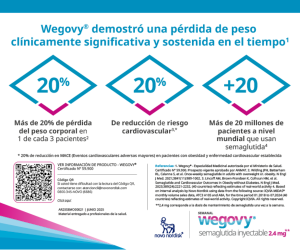Beta cell autoimmunity in elderly with type 2 diabetes: clinical, metabolic and therapeutic impact
DOI:
https://doi.org/10.47196/diab.v49i1.193Keywords:
diabetes, autoimmune, elderly, autoantibodies, ZnT8Abstract
Introduction: 111 patients with diabetes with over 65 years old and non-obese (BMI <30.0 kg/m2), were studied.
Methods: GADA, ZnT8, IA2a and PAA, 4 antibody markers for pancreatic ß cell autoimmunity were determined. Personal and familiar history of diabetes and autoimmune diseases were collected, and metabolic, biochemical, anthropometric, clinical and therapeutic variables were measured.
Results: 32% of patients had at least one antibody. Most frequent antibody was PAA 58,3 %, followed by GADA 30,5%, ZnT8 27,7% and IA2A 5,5%. Patients with antibodies had greater waist, greater insulin resistance and ß cell function and higher prevalence of microangiopathic complications. Insulin requirement was larger for patients with antibodies but differences were not significant.
Conclusions: these results are different from those that would be expected in both Type 2 diabetes and LADA, suggesting that this population may have different features, and the issue needs further analysis. We propose the name LADE (Latent Autoimmune Diabetes in Elderly) for these patients over 65 years non-obese DM2 Au +.
References
Tuomi T, Groop LC, Zimmet PZ, et al. Antibodies to glutamic acid decarboxylase reveal latent autoimmune diabetes mellitus in adults with a non-insulin-dependent onset of disease. Diabetes 42: 359-62, 1993.
Zimmet PZ, Tuomi T, Mackay IR, et al. Latent autoimmune diabetes mellitus in adults (LADA): the role of antibodies to glutamic acid decarboxylase in diagnosis and prediction of insulin dependency. Diab. Med. 11: 299-303, 1994.
Radtke MA, Midthjell K, Nilsen TI, et al. Heterogeneity of patients with latent autoimmune diabetes in adults: linkage to autoimmunity is apparent only in those with perceived need for insulin treatment: results from the Nord-Trøndelag Health (HUNT) study. Diabetes Care 32:245-250, 2009.
Rosário PWS, Sepulveda J, Alvarenga T, et al. Latent autoimmune diabetes in adults (LADA): usefulness of anti-GAD antibody titers and benefit of early insulinization, Arq. Bras. Endocrinol. Metab. 51:52-58, 2007.
David R, Leslie G, Williams R, et al. Type 1 diabetes and latent autoimmune diabetes in adults: one end of the rainbow. J. Clin. Endocrinol. Metab. 91:1654-1659, 2006.
Calsolari MR, Rosário PWS, Reis JS. Latent autoimmune diabetes of adult or slim type 2 diabetes mellitus? Arq. Bras. Endocrinol. Metabol. 52:315-321, 2008.
Palmer JP, Hampe CS, Chiu H, et al. Is latent autoimmune diabetes in adults distinct from type I diabetes or just type I diabetes at an older age? Diabetes 54 (S2): S62-7, 2005.
Desai M, Clark A. Autoimmune diabetes in adults: lessons from the UKPDS. Diabet. Med. 25 (S2): 30-34, 2008.
Turner R, Stratton I, Horton V, et al. UKPDS 25. Autoantibodies to islet-cell cytoplasm and glutamic acid decarboxylase for prediction of insulin requirement in type 2 diabetes. Lancet 350: 1288-1293, 1997.
Grundy SM, Cleeman JI, Daniels SR, et al. Diagnosis and management of the metabolic syndrome. An American Heart Association/National Heart, Lung, and Blood Institute Scientific Statement. Executive Summary. Circulation 112:e285-e290, 2005.
Levy JC, Matthews DR, Hermans MP. Correct homeostasis model assessment (HOMA) evaluation uses the computer program. Diabetes Care 21: 2191-2192, 1998.
Valdez SN, Sica M, Labovsky V, et al. Combined measurement of diabetes mellitus immunological markers: an assessment of its benefits in adult onset patients. Autoimmunity, 33:227-236, 2001.
Centers for Disease Control and Prevention. National diabetes fact sheet, 2011. Accesible en http://www.cdc.gov/diabetes/pubs/pdf/ndfs_2011.pdf.
Pietropaolo M, Barinas-Mitchell E, Pietropaolo SL, et al. Evidence of islet cell autoimmunity in elderly patients with type 2 diabetes. Diabetes 49: 32-38, 2000.
Poudel RR. LADA: From oral hypoglycemic agents to early insulin. Indian J. Endocr. Metab. 16:S41-6, 2012.
Barinas Mitchell E, Kuller LH, Pietropaolo S, et al. The prevalence of the 65-kilodalton isoform of glutamic acid decarboxylase autoantibodies by glucose tolerance status in elderly patients from the cardiovascular health study. J. Clin. Endocrinol. Metab. August 91:2871-2877, 2006.
Gottsäter A, Landin-Olsson M, Lernmark Ä, et al. Glutamate decarboxylase antibody levels predict rate of beta-cell decline in adult-onset diabetes. Diabetes Res. Clin. Pract, 27:133-140, 1995.
Hawa M, Kolb H, Schloot N, et al. On behalf of the action LADA Consortium. Adult-onset autoimmune diabetes in Europe is prevalent with a broad clinical phenotype. Diabetes Care 36:908-913, 2013.
Itariu B, Stulnig T. Autoimmune aspects of type 2 diabetes mellitus. A mini-review. Gerontology 60:189-196, 2014.
Zinman B, Khan SE, Haffner SM, et al. Phenotypic characteristics of GAD antibody-positive recently diagnosed patients with type 2 diabetes in North America and Europe. ADOPT Study Group Diabetes 53: 3193-3200, 2004.
Buzzetti R, Di Pietro S, Giaccari A, et al. High titer of autoantibodies to GAD identifies a specific phenotype of adult-onset autoimmune diabetes. Diabetes Care 30: 932-938, 2007.
Brophy S, Brunt H, Davies H, et al. Interventions for latent autoimmune diabetes (LADA) in adults. Cochrane Database Syst. Rev. 2007 Jul 18;(3):CD006165.
Lohmann T, Kellner K, Verlohren HJ. Titer and combination of ICA and autoantibodies to glutamic acid decarboxylase discriminate two clinically distinct types of latent autoimmune diabetes in adults (LADA). Diabetologia, 44:1005-1010, 2001.
Downloads
Published
Issue
Section
License

This work is licensed under a Creative Commons Attribution-NonCommercial-NoDerivatives 4.0 International License.
Dirección Nacional de Derecho de Autor, Exp. N° 5.333.129. Instituto Nacional de la Propiedad Industrial, Marca «Revista de la Sociedad Argentina de Diabetes - Asociación Civil» N° de concesión 2.605.405 y N° de disposición 1.404/13.
La Revista de la SAD está licenciada bajo Licencia Creative Commons Atribución – No Comercial – Sin Obra Derivada 4.0 Internacional.
Por otra parte, la Revista SAD permite que los autores mantengan los derechos de autor sin restricciones.




























